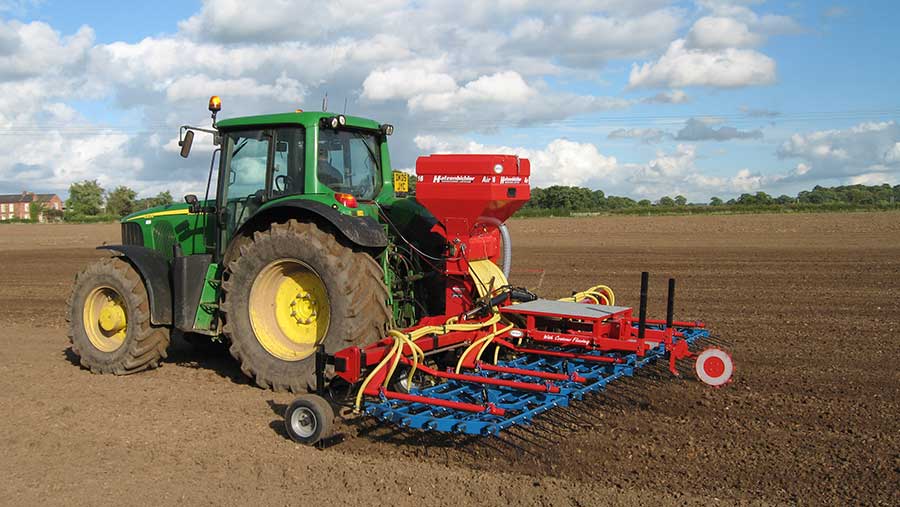3 vital steps you need to take to grow better grass silage

The success of a crop of grass silage should be judged on its feed value, not yield.
This throws attention on the whole process, not just the choice of seed, nor the harvesting period, but going right back to the start and evaluating soil quality.
There are three vital steps that farmers need to get right in order to maximise the feed potential of grass silage: soil management, cultivation and seed choice.
Below, three experts point out how farmers can get each stage of the production process right to guarantee good results.
See also: How a focus on soil biology can improve livestock health
Soil Management
Soil management lays the foundation for making good silage.
Compaction, too much organic manure or choosing the wrong fertiliser choice reduces the soil’s microbial activity, explains Ian Robertson, managing director at Sustainable Soil Management.
“Therefore, it’s so important that farmers and their agronomists look at their soils first, then decide on the right course of action.”
He says farmers should:
- Test soils every three to five years for fertility and pH and make sure the soil pH is right – between 6 and 6.5. This will give an index for potash, phosphate and magnesium and show up deficiencies.
- Check micro nutrients and interpret the results in to a practical plan to deliver solutions. If they are lacking, other minerals can’t work and the feed value of the crop suffers.
- Refer to Defra’s manual (RB209) or an adviser to calculate the required nutrients, taking into account any nutrient contribution from FYM or slurry
- Check for soil compaction
- When it comes to lime, it’s important to check three areas: find out its neutralising value – how strong it is and how reactive – how quickly it will work, and that its mineral base – calcium or magnesium, typically – is right for the soil type before buying.
Cultivations
Farmers must avoid shortcuts when it comes to cultivations, adding that good establishment is key to maximising grass yield and value, says OPICO managing director James Woolway.
“It’s tempting, when there’s a lot of cost involved, to try and get away with fewer cultivations but this can be false economy,” he warns. “Remember the existing sward will compete with the new seedlings so the soil in the area to be overseeded should be prepared well to give the seedlings the best chance.”
Mr Woolway suggests the following cultivation checklist:
- Look at the content and condition of the ley – is a reseed the best option, or do you just need to top up the levels of productive grass and fill in some bare areas?
- Follow good practice – avoid shortcuts in cultivation as this will limit the success of the reseed. When it comes to a complete reseed, the aim is to produce a seed bed smooth and firm enough to ride a bike across.
- Rolling – within 48 hours of sowing before the seed chits – is paramount – especially if conditions are dry, to improve soil-to-seed contact. It’s good to roll twice at different angles.
Seed
When it comes to selecting the right seed, the priority is to grow high-energy grass, says Limagrain seed specialist John Spence.
He recommends farmers:
- Take advantage of seed mixtures with proven feed value data
- Look for improved digestible fibre values as a significant proportion of this energy comes from the fibre. In fact, research from Michigan University has shown that even a 1% increase in digestible fibre can add 0.25litres/day of milk per cow.
- Select a mixture for the purpose whether that’s cutting, grazing or both
- Avoid a low value “all rounder” mixture with no track record
However, the mixture is just one link in the chain. There’s no point in sowing grass that is nutritionally perfect if it is sown into deficient soil or a poor seed bed.
“To be successful, all parts of the chain have to be right and taking advantage of the best techniques and advice at each stage,” adds Mr Spence.
